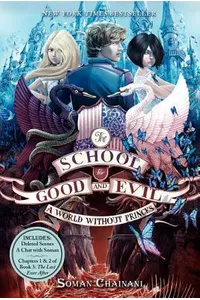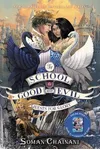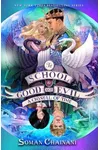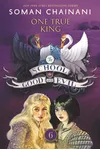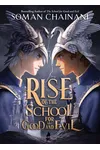Step into the enchanting world of The School for Good and Evil, where fairy tales twist and turn in delightfully unexpected ways! This captivating fantasy series by Soman Chainani invites readers to the Endless Woods, a magical realm where best friends Sophie and Agatha discover that the line between hero and villain isn’t as clear as it seems. With its witty storytelling and heartfelt exploration of friendship, identity, and morality, this series is a must-read for fans of fairy tales with a modern edge.
From its debut in 2013, The School for Good and Evil has charmed readers with its bold reimagining of classic tropes. Whether you’re drawn to the sparkling halls of the School for Good or the shadowy towers of the School for Evil, this series promises a thrilling ride filled with surprises.
How The School for Good and Evil Began
Soman Chainani, a Harvard graduate with a passion for fairy tales, dreamed up The School for Good and Evil in 2010 while working on a film project. Inspired by the darker, more complex original fairy tales he studied in college, Chainani wanted to craft a new story that captured their raw energy while challenging stereotypes. He envisioned a world where good and evil weren’t black-and-white, and where two unlikely friends could redefine what it means to be a hero or villain. The result was a novel that HarperCollins snapped up, launching a six-book saga that’s now a global phenomenon.
The Heart of The School for Good and Evil
The series kicks off with The School for Good and Evil (2013), where Sophie, a glamorous dreamer obsessed with becoming a princess, and Agatha, a quirky outcast labeled a witch, are whisked away to a magical school. Shockingly, Sophie lands in the School for Evil, while Agatha is placed in the School for Good. As they navigate classes like Princess Etiquette and Uglification, their friendship is tested, revealing that true goodness lies within.
Sequels like A World Without Princes (2014) and The Last Ever After (2015) deepen the adventure, exploring themes of betrayal, love, and self-discovery. The Camelot Years trilogy—Quests for Glory (2017), A Crystal of Time (2019), and One True King (2020)—follows Agatha and her true love, Tedros, as they face epic challenges to rule Camelot. Chainani’s vivid world-building, set in the lush Endless Woods, blends humor, romance, and dark twists, making each book a page-turner. Themes of challenging stereotypes, embracing one’s true self, and questioning morality resonate across the series, appealing to readers young and old.
The series’ style is both playful and profound, with a narrative that pokes fun at fairy tale clichés while honoring their emotional depth. From magical creatures to iconic characters like Merlin and Cinderella, the books weave familiar elements into a fresh, unpredictable tale.
Why The School for Good and Evil Resonates
The School for Good and Evil has sold over 4.5 million copies and been translated into 33 languages, cementing its place as a modern classic. Its 2022 Netflix film adaptation, starring Charlize Theron and Kerry Washington, introduced the story to new audiences, though fans cherish the books’ deeper character arcs. The series’ exploration of complex human nature—where no one is purely good or evil—strikes a chord in today’s world, encouraging readers to embrace their flaws and question snap judgments.
Chainani’s ability to blend humor, heart, and high-stakes drama has earned praise from critics and fans alike. The series’ vibrant community, active on platforms like Reddit, celebrates its nuanced take on friendship and identity, making it a standout in middle-grade and young adult fantasy.
- Publication Years: 2013–2020 (main series), plus prequels in 2022–2023
- Number of Books: Six main novels, two prequels, one handbook
- Awards: Nominated for Waterstone’s Children’s Book Prize (2014)
Grab The School for Good and Evil and dive into a fairy tale adventure that’s as thought-provoking as it is fun! Whether you’re Team Ever or Team Never, this series will sweep you into its magical world.

